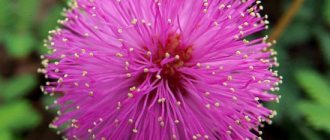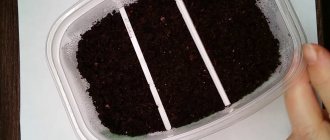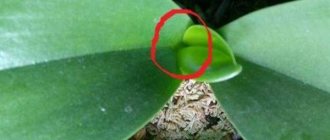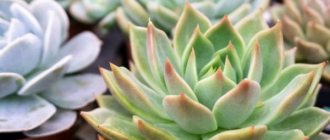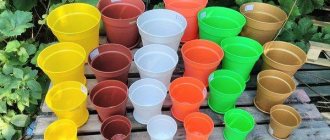The duration and intensity of light plays an important role in the life cycle of the violet (Saintpaulia). As a rule, the best place to place indoor flowers is a windowsill , but this is not exactly suitable for violets.
In summer they need protection from overheating, in winter - from the adverse effects of hot and dry air from batteries. Next, we will tell you in detail what the violet likes - light or shadow , since correctly chosen lighting will allow the plant to actively grow and bloom almost all year round.
Indoor violet (Saintpaulia) - brief description and varieties
The plant in question is a rosette of downy, fleshy leaves.
In delicate flowers. Depending on the variety, they can have different colors, sizes and shapes. There are many varieties of simple indoor violets and large double ones. The latter, of course, are more in demand among flower growers, but simple, uncomplicated flowers still decorate many houses and apartments. We invite you to familiarize yourself with the names and photographs of some popular hybrids of indoor violets. Based on the shape of the flowers, Saintpaulias are divided into large groups, each of which has its own set of varieties. The table below shows the photos and names of all existing groups.
Names of indoor violet groups based on flower structure
Now we provide you with photographs of some popular hybrids with names.
In the photo, Tarabar violet
Shining Stars - violet in the photo
The photo shows an indoor violet Pink Panther at home
Fire MothsViolet EK BullfightPictured violet White Queen
Amaranth
Chimera-Monique
Rasbery-Rampage
In the photo there is a violet for home use. Winter is smiling
Pictured is Blue Flash
Diseases and pests
A delicate flower can be damaged by bacteria, viruses, and fungi. As well as insects: spider mites, aphids, nematodes, mealybugs. In order for the violet to delight with lush flowering all year round, you need to protect it from pests and diseases.
Powdery mildew
The first signs of its presence are a white coating on the leaves. Subsequently, ulcers appear on all parts of the plant. A fungal disease can be provoked by a large amount of nitrogen, contaminated soil, or the introduction of fungus with dirty tools. They fight the fungus using fungicides - Topaz, Fundazol. They are bred in warm water; after spraying, the pots are placed in a dark, warm place.
Fusarium
The fusarium fungus settles in the root system, which causes rotting of the roots. Signs: brown leaf petioles, leaves fall off, rhizome is easily separated from the ground. Measures: remove rotting parts of the plant, dry flowers, spray with fungicides.
Late blight
The fungus enters through cuts on the stems and leaves. It is indicated by red spots on the foliage. Fungal spores persist in the soil and affect the entire plant. It is destroyed, the soil is changed, the container is sterilized. Fundazol and Benlat help. As a preventive measure, superphosphate is added to the soil. High humidity should not be allowed in the house.
Botrytis (grey mold)
The disease covers the entire flower and leads to its death. Fluffy gray-brown spots appear on the leaves. Leaves with such spots are removed, and the soil is watered with a weak solution of potassium permanganate. The plant is dug up, the roots are treated with potassium permanganate (solution), the soil is kept in the freezer for a day, then left in a warm room. Sick violets are treated with fungicides according to the instructions.
Chervetsy
Insects bite various parts of plants, and red spots appear at the sites of the bites. If you take the soil out of the pot, you can see small white fluffy lumps. When several pots are placed on a pallet, pests are able to move through the water. Saintpaulias are treated with Aktara, Fitoverm, Aktellik. Before planting, Bazudin is added to the soil.
Aphid
Green pests are easy to spot. They drink plant juice and infect buds and flowers. Helps get rid of insects Mospilan, Actellik.
Ticks
The spider pest leaves behind brown sunken spots. The fight is carried out with the help of Fitoverm, Akarin, Aktellika.
Nematodes
These worms can be seen under a microscope. They suck juices from the roots, releasing toxic substances. For prevention in the fight against microscopic worms, flowers are planted in peat soil. Add a Piperazine tablet to each pot.
Immunocytophyte is used as a prophylactic agent (1 tablet per 2.5 liters of water). The drug strengthens the immunity of violets, they get sick less often.
Proper care of violets in spring
For proper awakening, you need to gradually transfer the plant to a new regime. This process includes changing the regimes of watering, lighting, fertilizing, and type of fertilizer. And also for the most abundant flowering, it is recommended to replant the plant in the spring.
Watering
The frequency of watering in the spring is increased depending on the temperature and lighting conditions.
If a plant is grown on wick irrigation, many gardeners change it to a classic one in a tray for the winter.
In this case, in the spring, after a stable increase in temperature, the plants are put back on the wick.
Advice! If the temperature of the plants is not provided separately from the rest of the house, it is better to change watering after turning off the heating. If watering is increased earlier, then when the pipes get cold, you need to reduce it again for a week.
Lighting
In natural light, in the spring, the sunny day itself increases and the violets receive enough light. If violets grow under individual lighting, or additional lighting is provided to the required number of hours of daylight, lengthening it is carried out gradually:
- First, increase by 15 minutes and maintain this duration for at least 4 days, preferably a week;
- The next extension is also for 15 minutes and again 4-7 days in this mode;
- Subsequent additions of time are carried out for 30 minutes each time, and the interval between each subsequent addition is at least a week;
- When the daylight hours are 14 hours, no more time is added.
Artificial illumination of violets.
Some gardeners practice natural lighting with direct sunlight in spring. This method lengthens daylight hours. There are advantages and risks to this procedure:
- the advantages include the absence of the need for individual additional lighting and a natural transition to a new lighting mode;
- the downside is the risk of burns, but the sun in spring is not very active and if the sheets do not come into contact with the glass, the risk is minimal.
Transfer
If the grower wants to get maximum flowering in the summer, then a transplant is carried out in the spring.
When replanting, it is important to replace the earthen ball and remove damaged roots.
It is recommended to replant annually; the amount of nutrients in the soil and, in turn, the condition of the violet depend on this.
Spring is the period of awakening of Saintpaulia and therefore it is an ideal time for replanting, although it is not necessary.
Feeding
It is important to apply the correct fertilizer in the right dosage in the spring. In winter, it is recommended to reduce, or better yet completely cancel, fertilizing, so it is important to start the fertilizer calendar correctly in the spring and stick to it throughout the season
For transplanted Saintpaulia
If a spring transplant is planned, then the fertilizer calendar is calculated after the transplant and taking into account its date. There is no point in fertilizing before replanting, since the soil needs to be replaced.
The first feeding after transplantation is carried out no earlier than a week later, three to four are recommended. The new substrate contains enough micro- and macroelements to fully nourish the flower; if you start feeding too early, an overdose may occur, and this leads to a deterioration in the condition of the violet.
The transplanted violet needs enough nutrition from fresh soil.
Violet without transplantation or after transshipment
Plants that were simply transferred from one pot to another, without completely replacing the soil, or those that were not replanted at all, have a different start date for fertilizing.
In soil poor in nutrients, it is difficult for violets to awaken and begin active growth and preparation for flowering, so they are immediately fertilized as daylight hours lengthen.
Dosage and application calendar
Fertilizing is applied in the same way for all violets that are on the same type of irrigation; the sequence and dosage of different fertilizers also does not differ:
for violets on pallets, the dosage recommended by the manufacturer is halved. For those using wick irrigation, the dosage is reduced by 7-10 times;
Fertilizers are usually applied in March for good growth of roots and leaves.
This is especially important for transplanted individuals: fertilizer is applied to the tray once every two weeks or twice a month; with wick irrigation, fertilizers are applied constantly; this type of fertilizing needs to be added to the container for 2-3 weeks.
the next step will be fertilizers for flowering, these can be specialized for violets or for flowering ones. The plan for applying fertilizing is the same as in the first option: after a week in a tray, or constantly in a container for wick watering.
Advice! Many gardeners do not fertilize with different types of fertilizers. In this case, use a specialized fertilizer for Saintpaulia. This method is less expensive, since there is no need to buy two types of fertilizers.
Is it possible to grow completely under artificial light?
In artificial lighting conditions, violets grow and develop well , thanks to this:
- Saintpaulia can be propagated by leaves all year round;
- place large collections regardless of the location of windows and shelf space.
When installing artificial lighting, it must be taken into account that the process of photosynthesis requires blue and red spectrum.
apply to artificial lighting of violets :
- During the period of formation of peduncles, the duration of illumination is increased from 10 to 12-14 hours, or the light intensity is increased, including not one, but several lamps, or the violet is raised closer to the lamp;
- In order not to cause leaf burn, the length of daylight is increased gradually, adding 30 minutes every two days;
- The timing of turning on the lamps is important for plants: it is preferable to do this at the same time every day.
To regulate lighting, use a mechanical or electronic timer that turns on and off at the right time.
Flower shape - bell
Violets, whose flowers resemble bells in shape, are not able to fully open due to the structural features of the peduncle: the fused bases of the petals. There are several specimens of this species worthy of home breeding.
Admiral
Flowers are cornflower blue with wavy edges. The variety is classified as semi-double. The leaves have decorative value: they have a white edge on a dark green background.
Sea wolf
Why they gave such a name to soft lilac terry violets is not clear. The variety has a large dark green bunch of leaves in a rosette. Blooms luxuriantly. The petals are wavy, arranged in 2 rows. With proper care they grow up to 8 cm in diameter.
Chanson
One of the easiest types of violets to care for. It blooms magnificently, producing several buds at once. The color is blue with pink spots. It is impossible to find two completely identical flowers.
Community of little green men
Viola, Violet, viola. Viola is a cross-pollinating plant that forms compact bushes with branching straight or ascending stems 20-30 cm high. The flowers are large, with a diameter of 4 to 10 cm, of various shapes and colors (white, yellow, cream, orange, purple, red, blue, two- and three-color with an eye in the middle).
Types and varieties of violets
The genus contains about 400 species. The geography of the genus is very wide. Violets grow in areas with a temperate climate, and in the subtropics, and in the tropics of Europe, Asia, America, Africa, Australia, and New Zealand. Viola is a cross-pollinating plant that forms compact bushes with branching straight or ascending stems 20-30 cm high. The root system is fibrous. The leaves are alternate, toothed, ovate, oval or oblong-lanceolate, depending on the location on the stem, dark green in color. The flowers are large, with a diameter of 4 to 10 cm, of various shapes and colors (white, yellow, cream, orange, purple, red, blue, two- and three-colored with an eye in the middle). The flowering period, depending on the timing of sowing, begins in May-June and continues until autumn.
The most popular type: Wittrock violet or Pansy (Viola Wittrockiana). Of the perennial species in cultivation, you can find: Altai violet (Viola altaica) - purple flowers with a yellow throat; violet violet (Viola cucullata, Viola papilionacea) - violet-blue flowers; horned violet (Viola cornuta) - blue-violet flowers with a spur; fragrant violet (Viola odorata) - small flowers, very fragrant and other types.
Horned violet (Viola cornuta)
A perennial species of violet. Low, creeping, highly branched stems form dense cushions 10-25 cm high. The leaves are elongated-ovate, jagged, overwintering, up to 6 cm in length. The flowers are fragrant, from lilac and dark purple to white with a yellow eye. It blooms from May to September, but more profusely in the second half of summer.
Horned violet Blau Wunder is a bush, short-rhizome evergreen perennial 15-18 cm high. The bushes are round, up to 50 cm in diameter. It blooms from early May until frost, with a break in August. S. sets little, but self-seeding is possible. Propagated by seeds and vegetatively.
Horned violet
Viola cucullata
Homeland - wet meadows in eastern North America.
Short-rhizome perennial, forms dense clumps 15-17 cm high. The rhizome is jointed, branched, superficial. Grows from early April to November. Blooms in May, until the leaves fully unfold; seeds in June, numerous. Forms abundant self-seeding. Propagated by seeds and vegetatively.
Violet clump, Viola clump
Popular varieties of violet cap:
Freckles violet - violet flowers are white with purple specks;
White Czar violet - white flowers with dark strokes at the center.
Fragrant violet (Viola odorata)
Homeland - Forests of Eurasia.
Perennial plant up to 15 cm tall. The stems are creeping and take root easily. The leaves are petiolate, heart-shaped, blunt-toothed, up to 6 cm long, collected in dense bunches. Flowers up to 2 cm, simple or double, purple, less often white, have a strong pleasant aroma. It blooms in May for up to 25 days, sometimes again in the fall. Decorative all season from snow to snow, but especially during the flowering period.
Gives self-seeding. Fragrant violet reproduces by seeds and rooted rosettes.
Fragrant violet
Forest violet (Viola reichenbachiana)
Homeland - Forests of Europe.
Short-rhizome perennial, 35 cm high. Evergreen. The bush is compact. Blooms in May for 20-30 days. Gives self-seeding.
Tricolor violet (Viola tricoor)
The plant is 15-30 cm high, spreading, highly branched. The leaves are alternate with jagged edges. The flowers are alternate, irregular in shape with a spur, 5-10 cm in diameter, located under the leaves. The color of the flowers is very diverse, from pure white to almost black. Additional variety is provided by the presence of spots and strokes of various shapes.
Wittrock's violet, or Pansy (Viola wittrockiana)
A perennial plant 20-30 cm tall, grown as a biennial or annual. The leaves are round-oval. The flowers are large, solitary, from 4 to 10 cm in diameter, of various colors, often tricolor.
Wittrock violet hybrids are widely used for container and pot growing. Modern varieties are obtained from crossing wild species: yellow violet, tricolor violet, Altai violet and horned violet. Currently, more than 15 garden groups have been created, differing in the diameter and shape of the flower, the presence and size of the spot, the compactness and height of plants, flowering times and other, less significant, characteristics. Some varieties have corrugated petal edges. Blooms in April-October.
Wittrock Violet Fansy
In the selection of Wittrock violets, hybrids obtained by breeders of the Sakata Corporation, the world's largest producer of seeds for the professional market, are recognized as some of the best.
By nature, pansies are perennials. But usually in the third year the flowers become smaller and the bushes lose their compactness. This is why pansies are traditionally grown as an annual or biennial.
Popular pansy variety mixtures
All modern varieties of pansies can be divided into groups according to the size of the flowers.
In the group of giant pansies, one of the best is considered to be 'Majestic Giants' F1
. The diameter of the flowers reaches 10–11 cm. Plant height is 15 cm. Flowering is early and long, from spring to autumn. These pansies are resistant to adverse weather conditions. The group includes 16 varieties of different colors; almost all varieties have a dark spot in the form of an eye in the center of the flower.
Group of large-flowered pansies: 'Crown' Series F1
- dwarf bushes, compact, highly branched.
Flowers up to 8 cm in diameter, very bright, pure, uniform color, without spots. The plants are cold-resistant and bloom early; They look most impressive in mass plantings. The series consists of nine varieties of different colors and the 'Crown Formula Mixed'
.
'Regal Series' series belongs to the same group
F1, differing from the previous one only by the presence of dark “eyes” on the petals. The series consists of seven varieties and a mixture of varieties.
Medium-flowered pansies: 'Ultima' Series
F1 is a profusely flowering compact plant with flowers about 6 cm in diameter. This series has the largest number of varieties (26) of different colors.
'Crystal Bowl' Series F1 - dwarf plants with small dark green leaves and numerous flower stalks. Flowers are about 6 cm in diameter, uniform in color, without “eyes”. Hybrids are resistant to heat and are most attractive in groups. Consists of 12 varieties.
'Maxim' Series F1 - early and long flowering plants, resistant to heat and cold. Flowers with a diameter of 6 cm of various colors with a dark “eye” in the center. Includes 12 varieties.
Series 'Joker' F2 - has a very interesting, double and even triple coloring of the petals. The diameter of the flower is from 6 to 7.5 cm. There are seven varieties in the series.
Group of small-flowered pansies: 'Universal' series F1 - consists of 10 varieties with very compact, abundant and early flowering plants. The diameter of the flowers is 5.5–6 cm. An interesting fact is that in the second half of the twentieth century. The center of pansy selection moved from Western Europe to Japan, where most of the varieties described above were created.
Popular varieties of Wittrock violets:
Solid varieties of pansy violets : 'Floral Dance', 'Celestial, Queen', 'Helios';
Large-flowered varieties of pansy : 'Roggli Giants', 'Azure, Blue', 'Majestic Giants', 'Sunny Boy';
smaller varieties of pansy : 'Arkimgbt Beauty', 'Cbanteyland', 'Blue Heaven', 'Avalanche'.
Violet care
Despite all the richness of species, violets are quite similar in their choice of habitat: almost all of them prefer open or slightly shaded, moderately humid places. Soils should be rich and loose. Watering is moderate. Excess moisture can lead to complete death of the plant.
Violet propagation
Perennial species are propagated by dividing the bush after 3-4 years (August) or by seeds (before winter). Seedlings bloom in the second year. If Vitrocca violet varieties, as well as tricolor violet, are grown as an annual plant, the seeds are sown in March to prepare seedlings. If they are biennials, the seeds are sown in June-July in the ground, and the seedlings sprout after 2-3 weeks. At the end of August - beginning of September they are planted in a permanent place, maintaining a distance of 15-20 cm between plants.
Horned violet variety Sorbet Lilac Ice
Historical information about violets
More than two thousand years ago, the ancient Greeks and Romans decorated walls and tables on holidays with garlands and wreaths of violets. At a later time in Europe, fragrant violet was grown in monasteries, and a little later mountain violet was introduced into cultivation.
The first to be introduced into cultivation was the fragrant violet, then the mountain violet. At the end of the 18th century, the Russian botanist P. S. Poite first brought Altai violet to St. Petersburg. And at the beginning of the twentieth century. Europeans finally became acquainted with the Wittrock violet, otherwise called pansies, so beloved by flower growers around the world.
Violet: home care
After the end of the adaptation period, conditions favorable for growth are created, so it is important to know how to care for violets. First, choose a suitable place for the flower in the apartment, provide it with optimal temperature and air humidity, water it in a timely manner and feed it.
In nature, violets grow in conditions with high humidity, so in the house this indicator is maintained at 60%. In winter, it is advised to use humidifiers or place the pot in a tray with wet expanded clay, but the bottom of the container with the bush should not be in water.
Temperature and lighting for violets
Saintpaulia is quite thermophilic, so it feels good at temperatures within 20-25 degrees, but when it rises to 30°C, it overheats, which leads to a change in the color of leaf plates and flowers, as well as a decrease in their size. Violets do not tolerate drafts, sudden temperature changes and direct sunlight in summer. In winter, the air temperature in the room should be between 16-20°C.
The most suitable place for a flower pot is the windowsill of a window facing west or east. But in summer it is advised to move it to the north side, and in winter, on the contrary, to the south. If the windows are not sealed, then in winter the bush is placed on a shelf or table next to the window and phytolamps are used. When hypothermia occurs, the violet stops blooming.
The plant loves diffused light, so it is protected from direct rays to avoid burns. For abundant flowering, violet needs lighting for 10-14 hours. Moreover, Saintpaulias, which have dense dark green leaf plates, require more lighting than varieties with light-colored curly leaves.
Soil requirement
Although caring for indoor violets is quite simple, you need to take a responsible approach to choosing a substrate. Preference is given to light soil. It is better to buy ready-made soil for growing violets.
To prepare the mixture yourself, follow the following order:
- First, the garden soil is sifted.
- Mix it with the same amount of coarse river sand.
- To remove microorganisms and pests, the soil is calcined in the oven.
- To protect against stagnation of liquid at the bottom of the pot, drainage is made from broken brick, expanded clay or pieces of polystyrene foam 2 cm high.
Varietal Saintpaulias are planted in loose, slightly acidic soil with an acidity in the range of 6-6.5 pH.
It is prepared in the following proportion:
- leaf soil - 3 parts;
- coniferous soil – 1 part;
- river sand or perlite – 1 part;
- turf soil - 2 parts;
- high-moor peat – 1 part.
Soaked briquettes of compressed peat, for example Torfilin-A or Vialka, are often used as a base for soil. Then vermiculite or perlite is added to the prepared base in an amount of 30% of the total volume. Foam balls are used as a substitute for baking powder. To improve the quality of the substrate, add sphagnum moss, coconut fiber or crushed charcoal.
Choosing the size of the pot
In addition to choosing a mixture for planting, caring for violets in a pot requires selecting a suitable container for growing. Since the root system of any Saintpaulia variety is underdeveloped, choose a small pot. Otherwise, flowering will not occur soon, since the plant will begin to waste energy on root growth. Glazed ceramic and plastic pots do not allow the soil to breathe, so the choice is made on ceramics without a glazed coating.
For planting violets, choose a pot depending on age. A young bush is planted in a container with a diameter of 50-60 mm, and an adult plant in a pot with a circumference of 10-12 cm. The classification of Saintpaulias by size is also taken into account:
- subminiature bushes are planted in pots no larger than 5x5 cm;
- adult mini violets and medium-sized bushes feel good in a container with a circumference of no more than 7-9 cm;
- Large flowers can be transplanted into 12x12 cm containers.
Fertilizing violets
Many housewives are interested in the answer to the question of what kind of care is needed for violets to bloom. In many ways, the intensity of flowering depends on the creation of favorable conditions and proper feeding. Fertilizers are applied only during the period of active flowering and growth. Since the plant does not bloom in autumn and winter, and the growing season slows down, it is not fed.
Temperature for violets.
Caring for violets, as one of its components, includes the temperature of the plants. The most optimal temperature for violets is 20-24 degrees. At this temperature, violets grow strong, bloom profusely and for a long time.
When growing violets in cool conditions, such characteristics as a wider and brighter border, more expressive fantasy are better manifested; in varieties with a green border, the greens are more saturated. If violets gain buds and bloom in the hot season or in a room with a temperature of 28-30 degrees, it often happens that they do not bloom so profusely, the flowers are noticeably smaller in size, the border disappears completely or becomes much thinner and less bright, in varieties with a green border this is especially noticeable - the border either disappears completely or the green is very pale. Fantasy varieties have much fewer specks on the flowers and they are not as bright.
Saintpaulias are afraid of drafts. Due to the flow of cold air in winter, the leaves become covered with light brown spots and streaks. But if the plant gets too cold, its root system may rot. Then the violet can only be saved by complete re-rooting.
Methods of watering violets
To ensure proper care of the plant, it is especially important to follow the watering regime, preventing the substrate from drying out or becoming waterlogged. For irrigation use settled or boiled water at room temperature.
Once a month it is acidified with acetic or citric acid. For 1 liter of liquid take 1 teaspoon of vinegar or a pinch of citric acid. The indoor plant is not watered into the outlet, since moisture should not get into the growing point so that the bush does not become infected with fungus. Typically use one of the options below.
Wick watering
To implement this method, a wick made of cotton fabric or cord is passed into the drainage hole of the pot. The second end of the wick is immersed in a container with settled water. A lid with a hole through which the wick is removed is placed on top of the container with the liquid. The flower pot is placed on this lid. Thanks to the fabric cord, the violet will absorb as much moisture as needed from the water container. The soil moisture level is adjusted automatically depending on the need and room temperature.
But keep in mind that this method is not suitable for all plants, as it has some disadvantages:
- Wick watering is allowed to be used only in the warm season, because in winter the water in the container will be very cold, which will lead to hypothermia of the root system and the death of Saintpaulia.
- Uniform watering through the wick is achieved only in a small pot with a diameter of up to 7 cm. In large containers, due to the uneven distribution of moisture, the bush will bloom poorly.
Watering through a tray
Water is poured into the deep tray in which the flower stands to ¼ of the height of the pot. After half an hour, the soil will be well saturated with water, which is easy to guess by the change in color of the soil. After this, the pot is removed from the pan. If you add fertilizer to the water in the pan, you can water and feed at the same time.
Drip irrigation
To install drip irrigation, you will need a watering can with a narrow spout or a rubber enema. Thanks to such devices, water is gradually introduced into the soil, bypassing leaf plates and rosettes. Instead of a watering can or enema, it is allowed to use a plastic bottle with a hole in the lid into which a straw is inserted. Drip watering is stopped when water begins to flow out of the pot through the drainage holes. 15 minutes after the end of the procedure, excess moisture is drained from the pan.
Irrigation method
On very hot days, place the flower pot in a basin of settled water at room temperature for 1 hour. After the specified time has passed, the container is removed and excess moisture is allowed to drain, and then placed in its original place.
LiveInternetLiveInternet
Wednesday, December 19, 2012 05:20 + to quote book
When I was a child, violets always grew on my mother’s windowsill. Therefore, when I grew up, I decided to definitely plant these flowers in my house. I bought two pots of violets in the store, borrowed three leaves from friends and planted them in the ground, and my mother brought me another pot with a very beautiful violet. And now the northern window sill is overgrown with flowers, and I am filled with worries. I cared for the violet (as I thought) correctly: I watered it every day, removed the dried flowers, tore off the lower leaves so that the flower did not grow too much, groomed and cherished it and... two months later, out of six violets on my windowsill, there were only two stunted creatures left. I repeated the experiment, bought and acquired new specimens of violets until I decided to end the experiments and accept the inevitable - violets do not want to live in my house. With the advent of the Internet, everything went differently: after reading smart and not so much, having tried everything that flower growers advised, I got four more violets and... they are still thriving and delight the eye with their splendor. 1. Location. The main condition: plenty of light and no sun, especially beware of the scorching midday rays. My violets grow on the north window. In the evening, of course, the sun appears on the windowsill, but these are already the rays of the setting sun, and they do no harm. Although my friend’s violets grow on a hot, southern windowsill (there is no other place). The secret here is in the curtains that the woman pulled right in the middle of the window. Since the curtains are made of thick tulle, the direct rays of the sun do not threaten the violets, and, on the other hand, they let enough light into the room.
2. Pot size. I have plastic pots, 10-13 cm in diameter, 10 cm in height. It is believed that a spoonful of soil and a pot from a yogurt cup are enough for violets, but violet flowers and leaves will be larger in larger pots. But know when to stop! In large and very large pots the violet will not look like a violet. 3. Earth mixture. Violets need good drainage. I fill almost half the pot with expanded clay, put in a piece of charcoal and cover it with plain Terra Vita soil. I tried to use a special mixture for Saintpaulias, but I didn’t like it - it doesn’t allow water to pass through very well, and the flower dies.
4. Watering. I think this is one of the most important points. Watering should be from below, with warm water. That is, in practice, it happens like this for me: once a week, if not less often, I take a deep bowl, pour settled water into it, heat it up a little in the microwave, add fertilizer (if it’s time to feed the plants) and put it in water pot with violet. The water should reach almost to the edge of the pot (but not higher! Water should not be poured into the pot through the top). I leave the flower like this until the soil on top looks and feels damp. You can immerse a flower pot in water overnight, or in the morning, and take it out in the evening. Let me make a reservation once again - it is necessary to water violets through the bottom using the above method no more than once a week, even in conditions like mine: a north window, under the windowsill there is a large radiator, which is extremely hot in winter. Frequent watering or watering from above leads to rotting of the roots and leaves of the plant. This is what happened with my first violets. They should be watered only when the earthen ball is almost completely dry. You can check this by dipping your finger into the ground: if it’s wet, it’s early to water, but if it’s dry, it’s time. Of course, this method is a little “messy” for your hands, but you will learn to determine the optimal time for watering violets. Another way is to find a violet that reacts most clearly and quickly to drought. I have one of these. Its flowers are not collected in one inflorescence at the top, but grow from the sides, from the axils of the leaves. This violet has leaves on long petioles, and when it wants to drink, the petioles droop, and the leaves almost lie “lifeless” on the windowsill. The first time I was very scared: I thought that’s it, my ward died, but after watering she picked up the leaves and stood proud. So now I see: if my violet began to drop its leaves, it’s time to give water to both her and the others - the conditions are equal for everyone.
5. Fertilizer application. This is done once every two weeks when the violet blooms. During the dormant period (although violets do not have pronounced dormancy), I fertilize the violets once every three to four weeks. The fertilization method is described above, but I repeat - I add fertilizer to the water for irrigation (directly in the bowl). I use Kemira-Lux fertilizer for flowering plants. 6. Transplant. Every year I change the soil for the violets and plant them again in the same pots.
7. Hygiene procedures. Let me explain: on many websites and in magazines I read that violets cannot be washed or sprayed - this is not true. Can. After all, these are also flowers - flowers that were not originally born in pots, but grew in nature in the fresh air, under normal climatic conditions - rain, wind, etc. Therefore, when the leaves of your violets turn pale from dust, take the flowers to the bathroom, turn on the shower and pour the violets, washing away the dirt. The shower stream washing the violet leaves should be gentle and warm. After a shower, leave the flowers in the bathroom until all the water has drained and the leaves have dried. If you place wet violets in the sun or bright light, spots will appear on the leaves. 8. Reproduction. It's simple: take a healthy leaf from a healthy violet and plant it in a separate pot. A leaf sometimes “sits” for a long time without changing. Sometimes it withers and dies off from above, but don’t worry - the “offspring” of the violet does not originate at the base of the leaf, but in the lower part of the leaf petiole, underground. Therefore, if the above-ground part of the violet leaf has died, do not rush to empty the pot, wait a little longer. A planted violet leaf may look outwardly healthy, but it doesn’t produce “babies” for a long time - especially wait until the offspring appear. The probability of non-appearance of offspring from a violet leaf is minimal. You can not plant the violet leaf directly into the ground, but first hold it in a jar of water and wait until the roots appear. Both methods are good - choose what you like. Well-developed, shiny, medium-sized leaf cuttings are taken from the violet rosette from the second row from the bottom. For variegated varieties of violets, it is better to take the greenest leaf - it has more chlorophyll, and therefore it takes root better. Sometimes (and under good conditions, quite often) a violet bush can form two or more rosettes. That is, “babies” (one or more small bushes) appear from the main outlet. When the child (or children) grow up, it turns out that you already have two or three full-sized violets in your pot. This is not very beautiful, and the violets are cramped: each individual bush leans in its own direction... Conclusion: it’s time to replant. Shake the violet out of the pot and directly separate the roots of all the bushes with your hands. It's easy to do. Sometimes the plant itself breaks up into “segments” in your hands. Plant all disconnected rosettes in separate pots. Here's another way to naturally increase your collection. Well-cared for violets will easily tolerate transplantation even in a blooming state. 9. Pruning and shaping the bush. I was often told that the lower leaves of the violet need to be torn off - then the rosette is more beautiful and compact. I did so, but the plants did not bloom and later died. Now I'm smarter: flower buds are hidden in the axils of the leaves. In order for them to develop well, the violet rosette should consist of approximately three rows of leaves. I tear off those leaves that are located below - below they are somehow lifeless and dull. After the leaves are torn off, the “stem” of the violet is exposed. The older the flower gets, the longer the “stem” of the violet becomes, which reduces its decorative value. Therefore, advice: you can replant the violet, deepen it and cover the “stem” with soil. But I prefer another method: the rosette of violet leaves is cut off (only a small “stump”-leg is left under the lower leaves). You put the “stump” in the water, soon roots appear on it - here you have a renewed flower. Also, do not forget to remove faded flower stalks, yellowed or damaged leaves. In order for the rosette of violet leaves to develop evenly, the pot with the plant must be periodically turned in different directions in relation to the light. Good luck to you! Gardenia.ru
| Categories: | alluring world of flowers |
Tags:
violets care
Cited 863 times Liked by: 238 users
Like share
0
Like
- 238
I liked the post - 863
Quoted - 9
Saved
- 863
Add to quote book - 9
Save to links
Liked238
0
Cats and violets
We hasten to say that the popular horror story about the danger of violets, which cats are so partial to, is somewhat exaggerated: the flower is considered conditionally safe for animals.
However, all lovers of animals and plants must know:
- All cats tolerate toxic substances that enter the body in completely different ways. This generally applies to all plants, food from the owner’s table, etc., so the argument “...but the neighbor’s cat eats cacti” is not very good.
- If you notice that your cat accidentally feasted on potted flowers, and then did it again and again, it’s time to make your cat’s flowerbed. Animals need vitamins and cleansing of the digestive system, and let not homemade violet flowers help with this, but cereals, catnip, thyme, etc.
Let touching curly flowers with leaves that are pleasant to the touch live in your home as long as possible! Violet is a joy at home, and looking out the window through a bright, cheerful “hedge” immediately becomes much more pleasant even on a bad day.
- Indoor flowers and plants for the kitchen - choose unpretentious, useful and beautiful
- How to get rid of midges in flowers
- Kitchen design and decor - site guide
- 12 super ideas for crafts for the home and kitchen
- Kitchen panels - ideas and instructions
- Kitchen wall decor - 12 super ideas
- Kitchen design and decor - site guide
Climbing shade-loving indoor plants
Indoor flowers and flowering plants with names
You can decorate the space and create original compositions with the help of vines and climbing plants. They can be grown in pots, hanging flower pots and even baskets - hanging plants will hang decoratively and create fancy compositions.
Philodendron climbing
This plant responds equally negatively to both deep shade and direct sunlight. It is for this reason that gardeners recommend placing it in semi-shaded areas of the house. During the growing season, philodendron needs abundant and frequent watering; in winter, it is recommended to reduce the amount of moisture.
Tradescantia
Different types of this ampelous plant differ from each other in the color of the leaves - they can be rich green or purple, they may have pale green or silver stripes. The shape of the leaf blades is lanceolate.
In order to fully enjoy the decorative nature of Tradescantia, it is necessary to place it either in partial shade or in a place where daylight is diffused. Another important condition is a sufficient level of moisture.
Cissus
Cissus is an ideal option for decorating large spaces. The fact is that this plant grows quickly. Separately, it is worth mentioning the variety of varieties, thanks to which gardeners can always experiment: leaf plates can be large or small, leathery and delicate, whole and dissected.
Indoor cissus
Common mistakes when growing violets
Inexperienced flower growers who have not studied in advance the features of caring for and growing violets at home make common common mistakes:
- Due to mistakes in cultivation, few buds are formed on the bush or flowering stops altogether. Therefore, housewives have a question about why violets bloom poorly. This happens due to heat, insufficient light, cold or if the pot is too large.
- If you do not maintain air humidity in the room, then if it is too dry, the flowers dry out and become deformed, and the size of the leaves decreases.
- With a lack of nutrients, few flower stalks are formed. The same thing happens when there is insufficient lighting. For the same reason, the leaves are strongly stretched upward.
- With too much light, leaf plates grow too densely and become deformed. If, in addition to the abundance of lighting, the bush is not watered correctly and the humidity is kept low, then the leaves turn yellow. Yellowing of foliage is also observed with an excess of fertilizers.
- If the temperature is very low, the leaf blades turn pale and their petioles become elongated.
Some mistakes made by housewives are associated with the wrong choice of place for a flower. On the south side, spots appear on the plant due to sunburn, and when the pot is placed in a draft, the leaves become covered with brown spots. The same thing happens when cold water gets in.
How does a lack or excess of light affect the growth and development of a plant?
Whether violets need light, they themselves will tell you with their appearance:
- if the young leaves develop well and the flower stalks rise above the rosette, then the violet has enough light ;
- elongated petioles, too thin leaf blade, leaves pointing upward, the violet stops growing and blooming - a sign of insufficient light ;
With a lack of light, the leaves begin to stretch.
- in good light, the leaves of variegated varieties are brightly colored;
- the leaves fall down, over the edges of the container, the color is light, with a yellowish tint, the petioles are shortened, the rosette is thickened - long daylight hours (more than 14 hours);
- short peduncles, pale color and smaller flowers, short flowering period - excess light.
A variety of varieties and types of violets for home cultivation
There are 20 species of violets that grow in nature. In addition, scientists have bred over 32 thousand varieties, which differ in the size of the rosettes, the appearance of the leaves, the color of the leaf blades, as well as the shape and structure of the flowers.
Based on the size and arrangement of the petals, there are 5 types of indoor violets:
- pansies;
- star;
- bell;
- bowl;
- wasp.
Violet flower shapes.
The color of violet petals can be very different. The shape of the socket can also be of the following types:
- simple;
- semi-double;
- terry.
Important! Exquisite patterned violets can decorate not only the windowsill, but with their help you can create fancy compositions on special shelving and in the kitchen.
Why is there no flowering indoors?
If an adult violet does not bloom, then the reason for this may be improper care for it, namely:
Lighting: the danger of poor care
If the leaves are small and strongly stretch upward, then there is not enough light in the room. Violet loves good lighting, but is afraid of direct sunlight. They cause leaf burns.
Humidity: how much to water
Saintpaulia requires regular watering, but does not tolerate waterlogging.
Let the water sit before use
The water should be settled and warm:
| How to water | under the root or on a pallet |
| Indoor humidity | does not exceed 30%, |
| Required humidity | prefers 50% humidity |
Therefore, it is necessary to periodically humidify the surrounding air, but the drops should not fall on the leaves. It is best to place a humidifier next to the flower.
Fertilizing: how to apply fertilizers
During flowering, the plant needs to be fed once a week with special fertilizers for indoor flowers. And if this is a universal fertilizer, then the dose indicated on the package should be halved.
The soil
To bloom, violets need loose, light soil so that moisture does not accumulate in the top layer. Drainage for Saintpaulias is of paramount importance, because... Stagnation of water leads to rotting of the roots.
Foam plastic, pebbles, and expanded clay are used for drainage. Violets do not like acidic soils either. The top layer of soil must be renewed annually.
Choosing a pot: the reason for long flowering
The pot in which the Saintpaulia is located should be a little cramped. In a spacious pot, she will tend to develop a root system to fill it. And you will have to wait a long time for flowers from her.
But in a very cramped pot the plant will also be uncomfortable. Especially if he is surrounded by stepchildren. Periodically it is necessary to replant the plants, removing young bushes.
Diseases and pests: what to do
Violets do not bloom when they are attacked by diseases and pests:
If the plant is lethargic, then it suffers from microflora; spraying with foundationazole will help.
You can also treat it with a weak solution of manganese.
Violets can also be affected by scale insects (red spots on leaves), aphids and mites (cobwebs). Spraying with Actillic or Fitoverm will help get rid of them. In the initial stage, washing the ground part with a weak soap solution helps.
To create conditions conducive to flowering, the violet is placed in a room facing east or south. In the second case, shading of the plant in the summer heat is required.
| If the side is north or shady | additional lighting with special lamps is required |
| How far to place from glass | no closer than 10 cm and no further than 30 cm from the glass to avoid burns or hypothermia |
How to choose lamps for illuminating violets (Saintpaulias)?
Most indoor plant lovers place their green “pets” on the windowsill. If you prefer violets, then the window sill is precisely the most unfavorable place for growing this type of flower. In summer, direct sunlight can leave burns on the leaves of Saintpaulia. In winter, they may be exposed to hot, dry air generated by radiators. Another threat to Saintpaulias is the cold, which inevitably penetrates even through the most insulated window.
Do I need to feed violets after transplanting?
How to feed violets after transplantation and is it necessary to do so? It is not recommended to feed the flower with fertilizers immediately after a stressful procedure.
After 2-3 weeks it is necessary to carry out the first feeding. Before carrying out it, it is necessary to carefully examine the Saintpaulia. Feeding the flower is allowed only if it looks “healthy”. If the violet has a sluggish and drooping appearance, this may be the result of improper care or damage by harmful insects.
Important! Diseases that occur during the period of active growth do not allow fertilizing until the species has completely recovered.
Popular varieties and types of homemade violets
When choosing a houseplant, many people pay attention primarily to the beauty and shade of the inflorescence. Classic violet flower lilac or blue-purple
Wild varieties are distinguished by small flowers with five petals and a yellow core. Fashionable bred types of Saintpaulia are characterized by double, bordered and tricolor petals.
Indoor violets are divided into varieties according to the shape and color of leaves and flowers, the size of the rosette and flowers and the degree of their terry.
The most famous types include the following varieties.
- Star. It has a symmetrical arrangement of flower petals with a border and a light center.
- Pansies. With a serrated edge on the double petals and a contrasting border around their edge.
- Bell. They are distinguished by petals fused at the base, creating an increased terry effect.
- Bowl. With unfused petals of various shapes and shades, it received its name due to the elongated flowers that do not fully bloom.
Once you find yourself in a flower shop and see the variety of violets, you won’t be able to stop at just one plant. This is good, since violets love to grow surrounded by their fellow violets.
What soil to choose
Plants are replanted on average once a year.
In this case, you should pay attention to the plants, because signs for transplantation may appear much earlier. You should inspect the plant to see if shoots have appeared, if there is plaque on the soil surface, if the root system is compacted
In such cases, transplantation should begin immediately.
Transplantation of violets is carried out according to the following scheme:
- buy a new flower pot. The container must be clean and disinfected. The height of the pot can be up to 10 cm, and the diameter can be from 15 to 20 cm;
- prepare the ground. You can buy it in a store or make it yourself. To prepare the soil, you should take peat, black soil and sand (ratio 3:5:1). Next, the prepared mixture must be disinfected using a manganese solution. Before planting, the soil must be moistened;
- prepare the plant. Pre-moisten the soil of the flower and carefully remove it from the pot. Then inspect the rhizome and remove damaged roots;
- perform a transplant. To do this, drainage is poured onto the bottom of the flowerpot. Next, pour out a small layer of prepared soil, install the root of the plant and begin to slowly add soil, compacting it a little. After the soil completely covers the Saintpaulia root, it is moistened.
The best time to transplant is spring. Flowering plants can also be replanted.
Plant nutrition
Young flower growers often ask: how to feed violets? Specialized stores have a lot of products for feeding plants. But you can also use everyday things as fertilizer for violets, for example:
- Black tea;
- citrus peel;
- coffee grounds;
- sugar;
- onion;
- yeast.
You need to feed the flower during growth, but not more often than after 14 days. Also, if the appearance of the plant requires additional care, you can fertilize it.
Protection against diseases
How to grow violets at home so they don't get sick?
Saintpaulia is often affected by the fungal disease late blight. The pathogen penetrates through minor damage to the root system. Pathology is manifested by the appearance of gray spots on the leaves and the formation of rotting processes. It is not amenable to therapy. Infection can be avoided by regulating humidity: it should not exceed 70%. The soil should not be over-watered either.
Thrips parasitize the lower surface of leaves. Since eggs are laid on flowers and buds, these parts will have to be removed if there are signs of pests.
Nematodes parasitize the root system. If these parasites are found, it is necessary to treat the plant with special preparations and then transplant it into a new pot. To prevent the appearance of pests, before growing violets, you should purchase a high-quality soil mixture and avoid using soil from garden beds.
By the way, here is an article about ways to combat powdery mildew on violets.
Rules for caring for indoor violets
If the initially created home conditions are suitable for the indoor violet, it will not manifest itself as a capricious plant. The simplest care will help it bloom magnificently and for a long time. In unsuitable conditions, the flower will gradually fade and may eventually disappear completely.
Suitable home conditions for Saintpaulia:
• Illumination is good and continuous (10 hours a day), but without direct midday rays. • The soil is moisture-permeable and drains excess moisture well. • Humidity is low (50%), the leaves are never wet. • Watering is best through a tray using warm water. In winter - twice a week, in summer - daily. • Drafts are unacceptable. • Temperature - 25 °C in winter and 20 °C in summer.
The soil for this indoor flower should be acidic. The main component is leaf soil. Peat is added to it in a smaller volume. It precisely creates the acidic environment necessary for violet roots. The third component is coarse sand (volume - 1/8 of the soil-peat mixture). It is advisable to add sphagnum moss and charcoal.
As for Saintpaulia fertilizer, it is undoubtedly necessary.
But in this case it is important to remember moderation. Indoor violet does not like oily soil
Typically, fertilizing is carried out two or three times a year:
• in winter - humate solution; • in spring and autumn - with specially designed mineral fertilizer.
When choosing a container for indoor violets, you do not need to focus on large flowerpots. It is considered a mistake to believe that the size of the rosette will be comparable to the dimensions of the pot
It is important to understand one important nuance - the violet will not bloom in full color until its roots fill the pot. You shouldn't expect violets to bloom all year round - it's quite normal if only leaves remain in winter
Although under ideal conditions there may not be a break.
Small flowerpots are suitable for growing indoor violets at home.
In view of this, it is better to choose a pot with a diameter of about 6 cm as the first container for Saintpaulia. After a few years, the bush can be transplanted into a larger container - about 10 cm in diameter. About half of the pot should be occupied by a drainage layer. If holes for water drainage are not provided, you should make them yourself. When transplanting indoor violets, you need to completely replace the substrate.
Common problems with growing violets
• Thickening of the center of the bush, but the leaves do not change direction and color - this situation occurs due to excessive lighting (more than 14 hours a day). Shading the plant for several hours a day will help correct the situation. • Thickening, accompanied by drooping leaves and the appearance of a purple tint on their reverse side, also indicates an excess of light. But in this case, most likely, direct rays fall on the bush, which the violet does not like. The solution to the problem is shading. • A white coating on small leaves indicates that the violet is deeply planted, as a result of which the young leaves are in the water. Over time, the flower usually rots. Planting higher and reducing watering will solve the problem. • Small and hard, brittle leaves are a sign of excess fertilizer. In this situation, only one thing will help: transplanting indoor violets into new soil. • Many stepsons are formed, and the main bush slows down in development - this is most often a consequence of overfeeding. Replanting into new soil and removing the stepsons is necessary. • Buds dry out - dry air and high room temperature are to blame.
Propagation of indoor violets
Wanting to propagate their favorite variety of indoor violet, many novice gardeners are faced with a problem. It turns out that, despite the simplicity of the steps, it is not always possible to achieve the desired result at home - the appearance of the treasured roots.
The following tips will help you get a new bush of indoor violet to decorate your apartment window:
• Cut a fresh and healthy-looking leaf from the middle of the bush • Renew the cut diagonally with sharp scissors. • Immerse the stem of the leaf in water and wait. • Plant the leaf in the ground when the root reaches at least 4 cm. • Cover the container with plastic wrap to create a mini greenhouse. • Periodically water and ventilate the planted violet leaf. • Transplant the emerging rosette into a pot. After a year of proper care, the indoor violet will bloom.
Plant magnificent violets - indoor flowers. Photos and names, home care described in the article will help you get beautiful flowers to decorate your home.
Watch the video: Growing violets and my flowering secrets
Backlight Features
One of the most common problems that violet lovers have to face is the lack of sunlight. Lack of lighting can lead to the following consequences:
- growth slowdown;
- lack of flowering;
- poor development.
To avoid the above potential problems, it is necessary to resort to additional illumination of the plant. LED strips are perfect for this function. It is recommended to choose a tape whose color spectrum will be cool shades, and the power will not exceed 25 watts per 1 meter.
It is necessary to resort to LEDs on cloudy days or when the sun does not shine in the direction where the flowers are located.
Consider also the fact that for the rapid development of violets, up to 14 hours of daylight are needed. The LED should be turned on several hours before sunset. This feature allows you to use additional light if your plants are located on a window sill. This type of lighting will not cause discomfort to the eyes and will create comfort in the home.
Another type of lamp that could serve as additional lighting is a fluorescent lamp. If your plants are located not on the windowsill, but on a shelf, then just such a lamp will be convenient to use. The strength of such a lamp is its ability to evenly distribute light over a fairly large radius, which other types of lamps cannot boast of. As a rule, fluorescent lamps are placed above the flowers at a short distance. Most often, most people choose this option.
And yet, experts recommend using LED strips at home.
Planting and care at home
Indoor violet flowers photo
In order for a flower to bloom well and not die, it must be provided with suitable conditions throughout the year.
Lighting
Saintpaulias are very fond of light, which affects the health of the plant and its bright color. But direct sun exposure to plants should be avoided. This can cause the leaves to burn very quickly. The most suitable side for the growth of this indoor flower is the north. Therefore, you should choose window sills on the north or northeast side.
You can also resort to using artificial lighting. But such light should be uniform so that during the growth period the leaves do not turn towards the light source. The lamp should be installed on top of the plant.
If it is not possible to install a lamp above the flower, then you should periodically rotate the pot on the windowsill to receive light evenly.
Based on the condition of the flower, you can determine whether it receives enough light:
- there are a lot of leaves, the color is bright - the lighting is chosen perfectly;
- leaves stretch upward - there is little light;
- The leaves are curled and pale - there is not enough light.
Temperature
Since violets bloom almost all year round, special attention should be paid to the temperature regime in the house. The air must be heated to at least 16°C
This temperature must be maintained constantly for the plant to bloom well. You need to be prepared for the fact that during the hot months of summer - July-August - the plant may stop blooming.
Air humidity
Saintpaulias love moist air. To do this, maintain humidity at 50% or 60%. Therefore, such a flower grows very well in the kitchen, where there is always steam in the air after cooking.
In winter, the heating season begins, the heating is turned on and the air becomes dry. Therefore, indoor flowers can be kept on a pallet by placing moisture-retaining objects under it: moss, newspapers, drainage.
In addition, you should avoid places where there is cool air. Drafts are the enemies of Saintpaulias.
Illumination for violets, what to use
There are many different lighting options for indoor plants. The most suitable lamps for violets are fluorescent.
It is most practical to choose such lamps of standard sizes: 26 mm in diameter and 59 cm in length. The average power is suitable - 30 W. Although for young plants you can use 18 W.
The radiation of one standard fluorescent lamp is enough for an area of approximately 1 m². Hang the lamp at a height of 20-25 cm from the violet bushes. It is advisable that the lamp shines from above, and not from the side.
For better light dispersion, you can use reflectors (foil, mirrors).
You need to turn on the artificial light source for violets for 12 hours. Some people use special switches with a timer, when the lamp goes out and comes on at the same time automatically, which is very convenient.
LED strips are also effective. They are convenient to attach to any surface in any position. In addition, they are very energy efficient. The only negative is their cost, which is quite high.
If you are seriously passionate about growing Saintpaulias and grow them not only for yourself, but also for sale, then backlit racks for violets would be an excellent solution. The lamps are immediately mounted on the shelves on which the pots are placed.
If you know little about electricity and carpentry, it is better to order such a rack from professionals. Design, size, number of shelves - all this is done at your discretion. When assembling such a structure, it is important to take into account electrical insulation, because the plant will be regularly watered.
Tips for placing violets on racks with lamps
- The optimal height between shelves is 45 cm.
- For varieties of violets that bloom with red flowers, there are special phytolamps that have a specific emission spectrum that allows you to obtain many shades of red. Such lamps are installed as additional ones.
- You need to gradually transfer violets to artificial light: first turn on the lamps for an hour, then increase this time by 15-20 minutes day after day.
- Types of violets whose leaves are dark and denser are best placed in the center of the shelf; they need a little more light.
- The temperature on the upper shelves is always slightly higher than on the lower ones. Place young bushes on top, they will be more comfortable in the warmth.
Do not forget that lighting for violets is the most important condition for their existence. Without light, many processes in the plant will go out, it will not bloom and may soon die. If you have a fairly free meta on the window sills, then try to place Saintpaulia on the server or eastern side.
The duration and intensity of light plays an important role in the life cycle of the violet (Saintpaulia). As a rule, the best place to place indoor flowers is a windowsill , but this is not exactly suitable for violets.
In summer they need protection from overheating, in winter - from the adverse effects of hot and dry air from batteries.
Next, we will tell you in detail what the violet likes - light or shadow , since correctly chosen lighting will allow the plant to actively grow and bloom almost all year round.
conclusions
- The indoor violet is a light-loving plant, but you should not place it on the windowsill on the south side of the house.
- Comfortable temperature for the growth of violets is 20-22 degrees.
- Violets are lovers of high air humidity. To do this, it is best to place a bowl of water next to the pot.
- In summer, at temperatures above 28 degrees, the room where the violet is located must be periodically ventilated, and also use a fan or air conditioner.
- It is best to take a pot for a violet three times smaller than its crown.
- The soil in the violet needs to be changed every spring.
- There are three ways to propagate violets: by children, by seeds and by leaves.
- It is best to water the violet through a tray.
- Once every couple of months, the violet should take a preventive shower. Remove excess moisture from the leaves as quickly as possible.
What lamps are suitable for blooming violets.
Usually, plants in indoor conditions really lack light (and not only in winter, but also in summer), and little light means no development, no growth, no flowering. To compensate for the lack of lighting, it is necessary to supplement the plants with additional lighting. Sometimes plants are grown completely without daylight - only with the help of lamps (for example: in a room where there are no windows; or if the plants are far from the window). By selecting the spectrum, alternating the duration of the light and dark periods, you can speed up or slow down the development of the plant, shorten the growing season, etc.
If you only need to illuminate the plants, then in this situation you can get by with fairly cheap fluorescent lamps, almost without worrying about their spectrum. The advantage of fluorescent lamps is that they allow illumination to be distributed evenly over a larger area than with other types of lamps. The lamps are installed above the plants approximately 20 centimeters from the top leaf. In the future, it is necessary to provide for the possibility of moving them (lamps or plants). Usually they place lamps higher than they should be, and then raise the plants to the lamps, using any stands of different heights.
If violets are located on a windowsill or near a window, then it is optimal to illuminate them with LED strips. The tapes should be cold white with a power of 15 to 25 watts per meter, depending on the orientation of the window to the cardinal points and the presence of trees under the windows. The LED strips are turned on by a timer at a time when the sun is not shining towards the window. The light from LED strips does not hurt the eyes and creates cozy lighting in the room.
Tropical plants need 12-14 hours of daylight to fully develop. Then they will develop well and bloom. This means you need to turn on the backlight a couple of hours before the sun shines outside, and turn it off a few hours after it gets dark. It is very convenient to use a relay timer when supplementary lighting or full illumination of plants.
With full artificial lighting of plants, the lighting spectrum must be taken into account. If your plants do not see daylight, then you need to install lamps with a special spectrum for them - for plants and/or aquariums. A lamp designed to illuminate plants must contain both red and blue colors.
Many fluorescent lamp manufacturers offer lamps with a spectrum optimized for plants, but do not go for these specialized lamps, which are much more expensive than regular lamps. It is not necessary to purchase Flora lamps. Install a more powerful lamp with a high color rendering index (lamp marking - /9..). Its spectrum will contain all the necessary components, and it will provide much more light than a special lamp.
The power of the lamp depends on its length. Longer lamps provide more light. If possible, longer and more powerful lamps should be used, since they have a higher light output. Weak light cannot be replaced by long daylight hours. Lamps with fluorescent lamps 120 cm long and 36-40 W are best suited for this. Lamps with the first number /6.. and /7..(765) are good, and lamps /8.. and 9/..(965) are excellent. The lamps of the 8th and 9th series are loaded with three and five-band phosphor, which qualitatively distinguishes these lamps from others in terms of improving the growth and development of plants.
Lamps 930 and 965 have different shades of light that affect our perception, but for violets they will be the same. I don’t like the yellowish tint of the 930 lamps. The 7 series lamps (765) are good lamps, but without the three-band phosphor, and with a slightly lower luminous intensity in Lumens. With 12 hours of use, the lamp will work well for about 3 years. When installing the lamp, sign the date of installation or the estimated time frame for its replacement.
Be sure to use reflectors with fluorescent lamps - they will significantly increase the useful luminous flux. When using a reflector, the illumination in the center almost triples, and the light spot on the surface becomes more concentrated - the lamp illuminates the plants, and not everything around. A good reflector directs blinding light down onto the plants.
